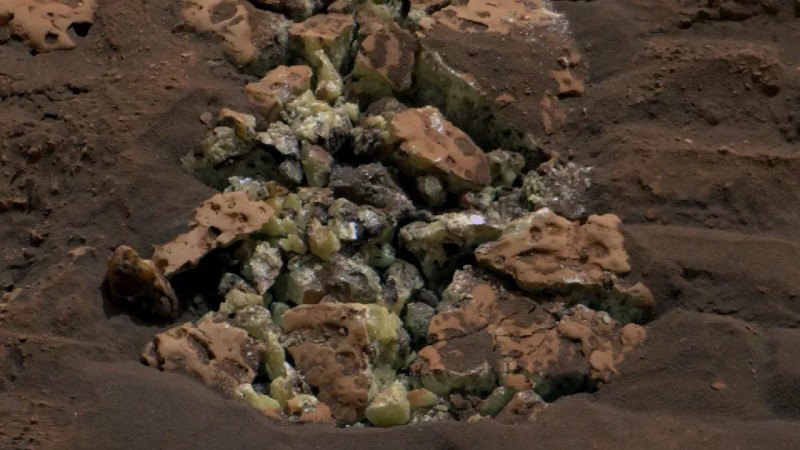NASA’s Curiosity rover has recently made a remarkable discovery on Mars by uncovering an abundance of pure sulfur after driving over and cracking open a rock, leaving scientists astonished. While the six-wheeled rover had previously detected sulfur on Mars, it was always found mixed with other minerals like magnesium and calcium. The discovery of pure sulfur, an odorless element formed under very specific conditions, is unexpected given the rover’s location. This finding, according to a NASA statement, suggests that pure sulfur is present in many rocks across the region.
Ashwin Vasavada, the mission’s project scientist at the Jet Propulsion Laboratory in California, likened this discovery to “finding an oasis in the desert,” emphasizing the anomaly and the new questions it raises. In the rover’s image of the rock, yellow sulfur crystals are visible within the crushed pockets of the rock. But Curiosity couldn’t sample these crystals with a drill because they were too tiny and fragile. Consequently, the rover moved to another large rock, dubbed Mammoth Lakes, where it drilled a hole to collect samples for further analysis.
Curiosity, now in its 12th year, made this significant find on May 30 while exploring Gediz Vallis, a channel on the slopes of Mount Sharp at the center of the Gale Crater. The rover has been examining this channel for signs of ancient microbial life over the past few months. According to current understanding, Mount Sharp was much wetter billions of years ago. The Gediz Vallis channel, possibly carved by strong winds or flows of liquid water as the planet dried out, provides clues to this watery past. Curiosity has noted mounds of debris in the channel, and the rocks often display pale rings or halos near their edges, likely caused by water-driven chemical reactions.
Scientists remain uncertain about how Mars’ history contributed to the formation of the recently discovered pure sulfur or its potential links to previously found sulfur-based minerals in the area. This unexpected find presents new questions about Mars’ geological and possibly biological history, suggesting there is still much to learn about the Red Planet’s past.












